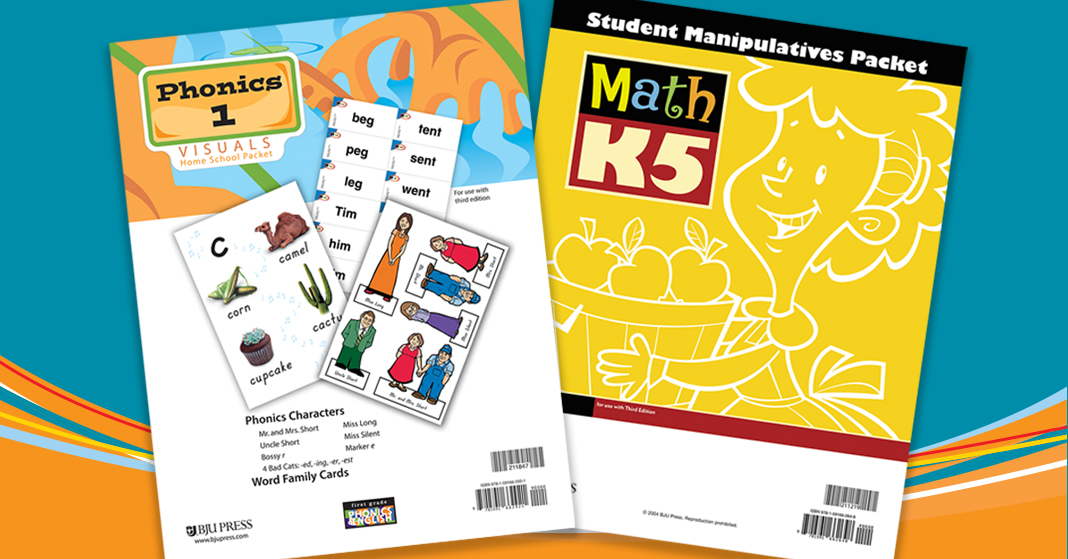
Manipulatives and visuals, oh my! If you weren’t sure what all those books are for, then chances are you’re also not sure about all these extra homeschool resources, either. Do you really need them? Are they worth it?
Let’s take a look at some of the homeschool resources you might need on your homeschool journey.
Manipulatives
Manipulatives are perhaps the most essential “extra” resource you can get. They’re incredibly important for young learners. Manipulatives give students a way to physically experience a concept that they wouldn’t otherwise be able to see, touch, or interact with. They give children an opportunity to experience a concept with all their senses. In other words, they’re using multisensory learning. For instance, how do you teach a child that one and one makes two? Most of us might take one pen, then get another pen, and then count again to find that we have two pens. Those pens become manipulatives that give meaning to the numbers. In math, manipulatives are a key components for helping children develop number sense.
Manipulative packets are specifically designed to match the scope of concepts taught in a particular course. They make life easier for you because, when you get to a new concept, you already have the manipulatives on hand and you don’t have to find things to use. BJU Press offers manipulative packets for math from K5 through Grade 6. Manipulatives also apply to other subjects, but on a much smaller scale than math. Cutouts and suggested items to use as manipulatives are available in the teacher editions and activity manuals rather than being available for separate purchase.
The most important thing is having manipulatives and using them regularly. That said, can’t you just use any old thing in place of the items in a manipulative packet? You could, but it will get harder and harder to find objects to use as manipulatives. What will you use for groups of hundreds, fractions, or unusual shapes? You may be able to save a little bit of money by not buying the packets, but you might lose what it was worth in time and effort.
Visuals
Visuals may seem self-explanatory, right? They’re things for your students to look at as they learn. It’s another aspect of multisensory learning—learning by sight. But a visuals packet isn’t just a bunch of pictures that explain a Bible lesson or illustrations for a reading lesson. They’re packets of charts, graphs, and other visuals that help students interact with concepts in a different way.
For example, BJU Press’s Phonics and English 1 includes visuals for the phonics characters—the Shorts, the Longs, and others. The visuals packet introduces the student to the character and what the character represents. Then as they go through their workbooks, they’ll see those characters again to remind them about the different phonetic rules. Children often find it easier to remember stories than lists of rules. The visual characters weave together a story for them to use as they’re learning phonics. Other visuals might give a plot diagram for a story, a chart for creating paragraphs, and so on.
Most visual packets come with a subject kit automatically, but do you really need them? You’ll have to decide based on what you know about how your child learns. But remember: children don’t always learn just one way, and sometimes they learn different concepts in different ways. You might need visuals for one lesson but not the next. It’s important to have them available even if you don’t always need them.
Unlike the books, these homeschool resources aren’t typically core materials that you’ll need every day. And not every curriculum provider offers them. Whether or not you should purchase them depends on what you need to do to teach a concept effectively. And that’s a question only you can answer.
Leave a Reply